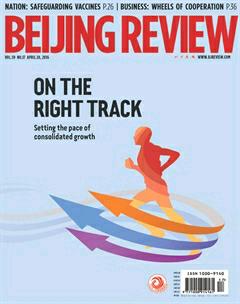Solving Parking Problems
2016-05-31
Solving Parking Problems
Oriental Outlook April 14
A serious lack of parking lots has become a headache for many Chinese cities. As a result of the rapidly growing number of cars and the lagging construction of parking lots, there was a lack of over 50 million parking spaces in 2015. The lack of parking lots has led to high-priced spaces.
It’s paradoxical that on the one hand, over 2 million cars have no permanent space to park in four first-tier cities—Beijing, Shanghai, Guangzhou and Shenzhen. On the other hand, nearly half of parking lots are not optimally used. Many for-profit parking lots are unoccupied all the time.
In order to address the problem, several Central Government departments, including the Ministry of Transport and the Ministry of Housing and Urban-Rural Development, issued policies on stepping up urban parking infrastructure construction last year.
Making the most of existing parking lots is also crucial. There are successful examples of office and apartment buildings sharing parking lots in Shanghai. In addition, parking apps that connect park-ing lot operators with customers through which customers can check empty parking lots and pay parking fees, are thriving.
However, as they are currently supervised by a dozen government departments, the latter’s responsibilities are often unclear and overlapping. Therefore, responsibilities should be clearly allocated among those departments to make the management of parking lots more efficient.

